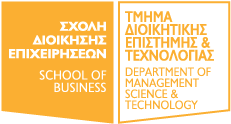Programming II
Course Description
Development environments and languages - compilers and interpreters - programming with objects- code style - building classes – inheritance - development of large systems - exceptions, assertions, interfaces, abstract patterns, packages - generalizations and threads - data structures: strings, iterators, vectors, stacks, and maps - structuring data with XML - file handling - development of graphical applications - string processing with regular expressions – functional programming and streams – development of internet applications.
Learning Outcomes
Upon completion of this course, students will be able to:
- Have a basic knowledge of the methods and programming techniques used for implementing information systems
- design and build moderately complex applications
- Use ready-made libraries and data structures
- Reuse design patterns to structure their code
- Process complex data structures and sources
- Evaluate alternative technologies and information system evaluation strategies










 76 Patission Str.
76 Patission Str. +30 210 8203129, 8203139
+30 210 8203129, 8203139 
